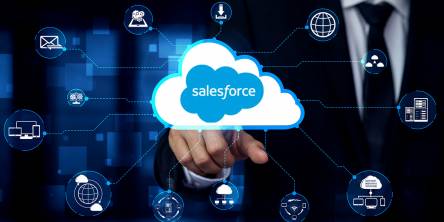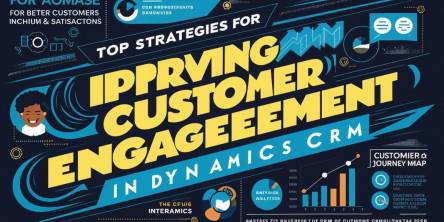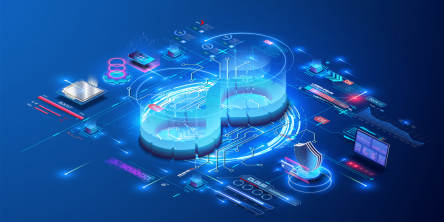Monolithic vs Microservices Security: Navigating the Landscape

While monolithic applications may have waned in popularity during the era dominated by the cloud and microservices, interest is resurgent. Organizations, in considering their position on the application modularity spectrum, are now examining both the advantages and drawbacks of relying on microservices. This evaluation encompasses factors such as cloud costs, performance concerns, and security issues, prompting a reconsideration of monolithic architectures.
With this article, I will delve into the security considerations of monolithic and microservices architectures, highlighting the nuances that distinguish them.
Monolithic Architecture: Fortifying the Citadel
A monolithic architecture represents the traditional, all-in-one approach where an entire application is built as a single, tightly integrated unit. In terms of security, monolithic systems have some inherent advantages. The consolidated nature of a monolith often results in simplified security management. With a single codebase, authentication mechanisms, and a centralized database, it becomes relatively straightforward to implement and monitor security measures.
- One key aspect of the security with this approach is the reduced attack surface. Because all elements are grouped, there are fewer avenues for potential attackers to exploit. Nevertheless, this amalgamation presents a dual challenge. A security breach in one segment of the system could jeopardize the entire application, increasing vulnerability to severe failures.
- Authentication is typically managed through a centralized system in this architecture. This simplicity can be an advantage for smaller applications, but it might pose challenges as the system scales. Furthermore, the coupling of components in a monolith means that a change in one area can have cascading effects, potentially introducing security vulnerabilities.
- Monitoring in this architecture is often less complex, as there's a single application to track. However, pinpointing issues within the monolith might be more challenging, and monitoring tools must be robust enough to handle the scale and complexity of a monolithic application.
- Containerization, while not inherently tied to monolithic architectures, is less common in this context. Containers are more associated with microservices due to their scalability and ease of deployment. However, as security measures evolve, containers are becoming an integral part of securing both monolithic and microservices architectures.
Microservices Architecture: The Security Mosaic
Microservices represent a departure from the consolidated approach, breaking down an application into independently deployable and scalable services. While this approach offers numerous advantages, their security landscape is more intricate.
- One of the primary distinctions lies in the attack surface. This architecture inherently have a larger attack surface compared to monolithic architectures. With each service acting as a potential entry point, the overall system becomes more resilient but also more complex to secure. However, this complexity allows for better isolation and containment of security breaches, limiting their impact to specific services.
- Authentication is distributed, with each service managing its authentication mechanisms. This decentralization enhances the scalability of authentication processes but requires robust coordination and management to avoid security gaps. Implementing a unified authentication system across microservices is crucial for maintaining a secure environment.
- The decoupling of services reduces the overall system's susceptibility to cascading failures. If one service fails or is compromised, it doesn't necessarily affect the entire application. This enhances the system's resilience and fault tolerance, crucial aspects of overall security.
- Monitoring microservices, on the other hand, is more challenging due to the distributed nature of the architecture. Each service needs individual monitoring, and correlating data from various services to identify and respond to security incidents requires sophisticated tools. However, the granularity allows for a more detailed and accurate analysis of the system's security posture.
- Containerization is a natural fit. Containers provide the agility and scalability required for managing and deploying numerous microservices efficiently. Container orchestration tools like Kubernetes play a crucial role in automating security measures, such as resource isolation and access control,
Choosing the Right Path: Balancing Act
While making the decision, one must consider security as the prime difference between monolithic and microservices architecture. While Monolithic architectures are simple and easy to operate, yet they may provide issues in terms of scalability and resilience to security breaches. Microservices, while encouraging flexibility and scalability, necessitate a more complex security policy to efficiently navigate the distributed landscape.
Final Words
In summary, the decision between the two architectures is not a simplistic either-or determination; rather, it hinges on aligning the architecture with the unique requirements and objectives of an organization. A crucial aspect of making a well-informed decision involves comprehending the security ramifications associated with each approach. Whether opting for the consolidated strength of a monolith or the distributed resilience of microservices, a robust and adaptive security strategy is paramount in safeguarding the digital citadel.
Similar Articles
Corporate transparency is essential in building stakeholder trust and credibility in today's evolving business environment. As businesses grow and adapt to changing regulations, ensuring adherence to rules and maintaining records has become increasingly intricate.
Among the solutions developed over the past few decades, Salesforce Financial Services Cloud (FSC) has emerged as the definitive choice for gaining flexibility, visibility, and long-lasting, inclusive growth in the financial sector.
Open source software (OSS) is distributed with its source code, which means it can be distributed, modified, and used freely with the original rights. Most users never see the source code, a critical part of the software.
It's one of the keystones, basic but key in the successful highly competitive modern business environment, where the connection with the customer is a must.
The speed of progress in the modern business landscape is quite relentless. For small-scale companies, this implies that keeping up with this progress is not simply gainful but fundamentally significant for their survival. And what does success in such an environment demand?
The finance sector needs to battle many difficulties in the modern and quick-moving digital landscape. Be it exploring the unpredictable snare of official guidelines or overseeing tremendous volumes of data - - financial establishments are feeling the pressure to succeed. This demanding environment, in turn, often leads to exhausted teams, costly manual errors, and inefficiencies that can be chalked up to repetitive tasks
The manufacturing industry, vital to the world economy, is at a pivotal intersection. I mean that, yet again, changes are afoot in the sector, this time driven by digital transformation as it represents a profound change in the very essence of how manufacturers operate, think, and drive innovation.
Technology helps make things easier and faster. Digitization is one of the aspects of technology that has changed how we live and work. It has brought many benefits for businesses, especially the travel industry. Customers can search online for the schemes offered and easily book trips, but payments need to be completed with ease.
In an article published by The Economist in 2017, while describing the astounding growth of titan companies like Google, Apple, Facebook, and Microsoft, it was mentioned how data had become “the oil of the digital era.”









